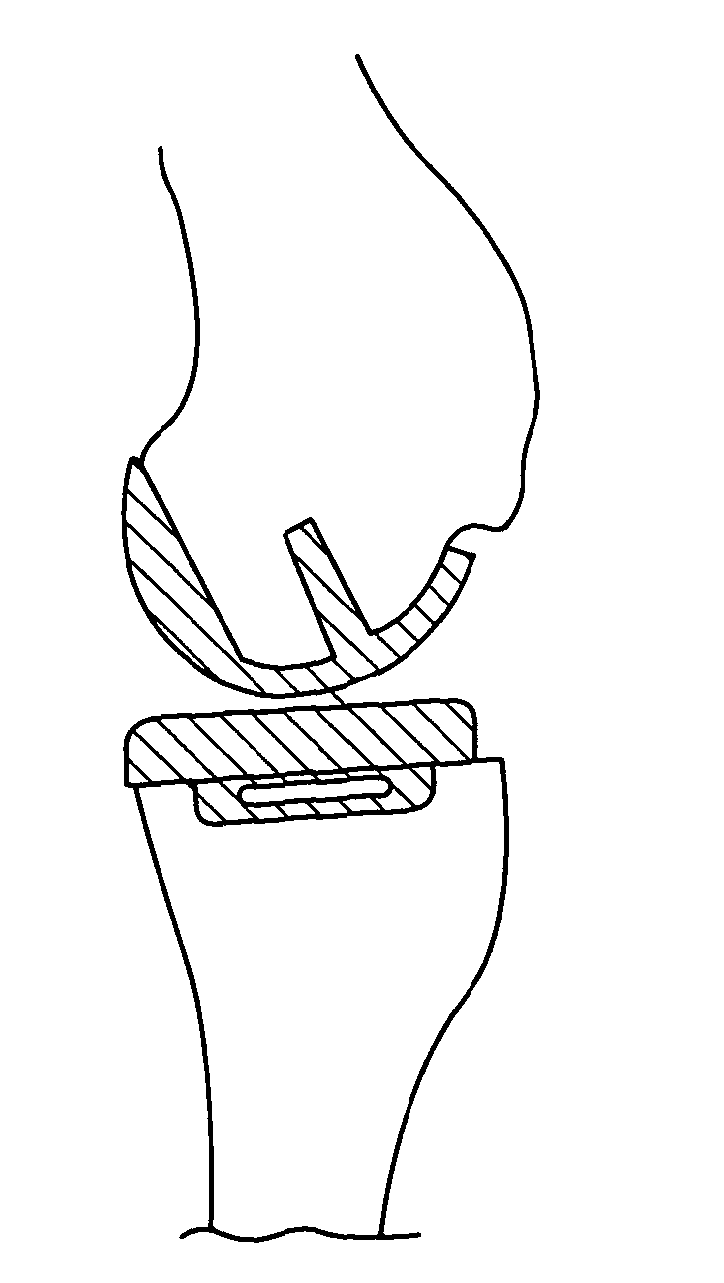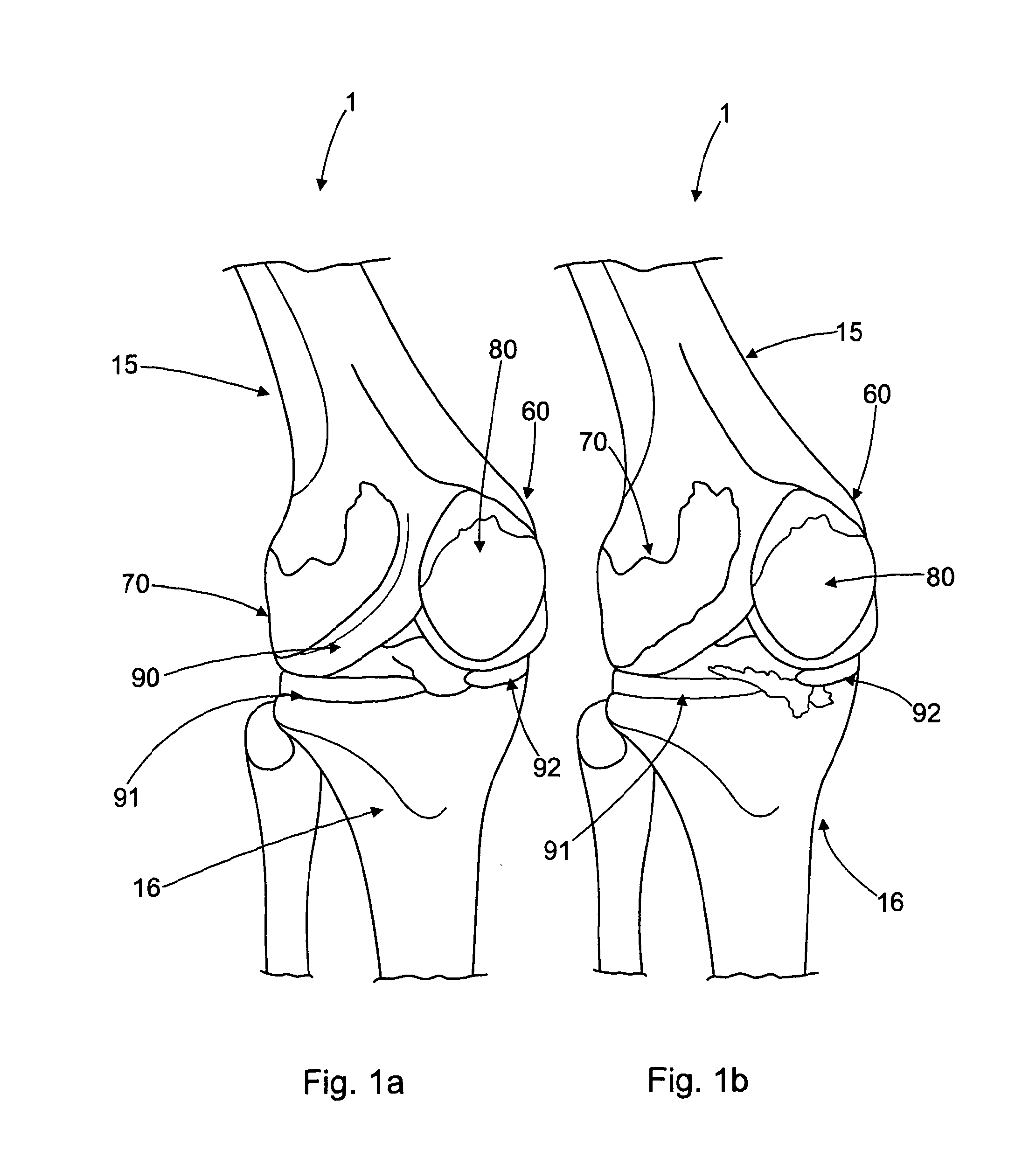Tibial prosthetic component for a partial or unicondylar bearing knee replacement, method of selecting such a tibial prosthetic component, method of implanting such a tibial prosthetic component and a kit for a surgeon
a tibial prosthetic and knee replacement technology, applied in the field of tibial prosthetic components for partial or unicondylar bearing knee replacement, can solve the problems of bone-on-bone contact, pain, and onset of pain, and no drug-based treatment has been found to stop or reverse these processes, so as to reduce the amount of bone, reduce the effect of weakening the bone, and improve the capacity to handle stress
- Summary
- Abstract
- Description
- Claims
- Application Information
AI Technical Summary
Benefits of technology
Problems solved by technology
Method used
Image
Examples
Embodiment Construction
[0090]FIG. 1a shows a healthy knee joint 1 and FIG. 1b shows a knee joint showing progressive knee joint degeneration. The knee joint 1 is where the end of the femur 15 meets the top of the tibia 16. The end of the femur 15 consists of two condyles 60, 70. These condyles 60, 70 sit on top of the tibia 16, which is like a platform. Thus, on each side of the joint 1, there is an area of contact between the two bones. When the knee is bent, the condyles 60, 70 of the femur 15 roll and slide on top of the tibia 16 at these two areas of contact. A third bone, the kneecap (patella) 80, glides over the front and end of the femur 15.
[0091]In a healthy knee joint (FIG. 1a), the surfaces of these bones are very smooth and covered with cartilage—a tough protective tissue. The articular disks of the knee-joint are called menisci 91, 92 because they only partly divide the joint space. These two disks, the medial meniscus 91 and the lateral meniscus 92, consist of connective tissue with extensive...
PUM
 Login to View More
Login to View More Abstract
Description
Claims
Application Information
 Login to View More
Login to View More - R&D
- Intellectual Property
- Life Sciences
- Materials
- Tech Scout
- Unparalleled Data Quality
- Higher Quality Content
- 60% Fewer Hallucinations
Browse by: Latest US Patents, China's latest patents, Technical Efficacy Thesaurus, Application Domain, Technology Topic, Popular Technical Reports.
© 2025 PatSnap. All rights reserved.Legal|Privacy policy|Modern Slavery Act Transparency Statement|Sitemap|About US| Contact US: help@patsnap.com



